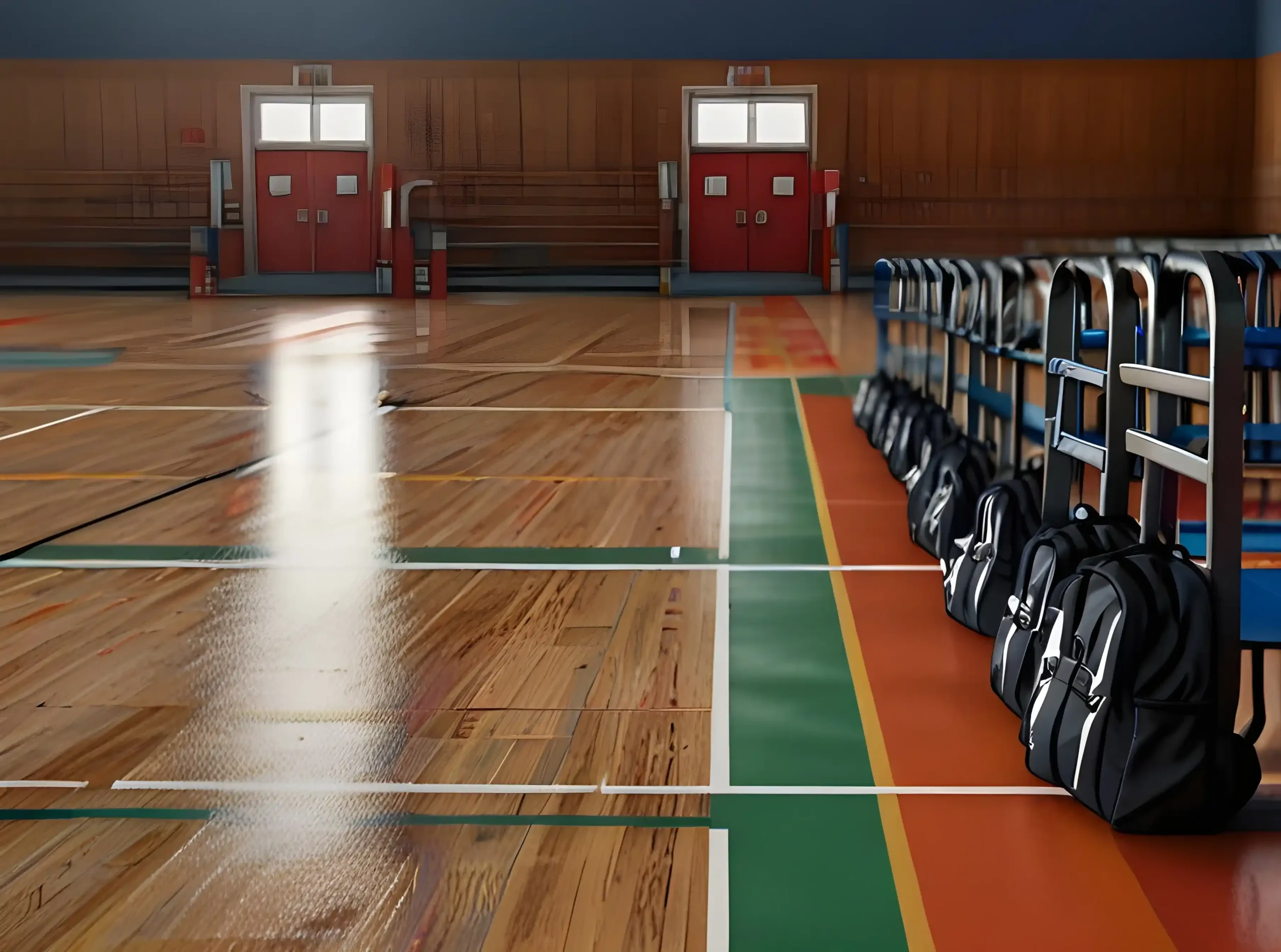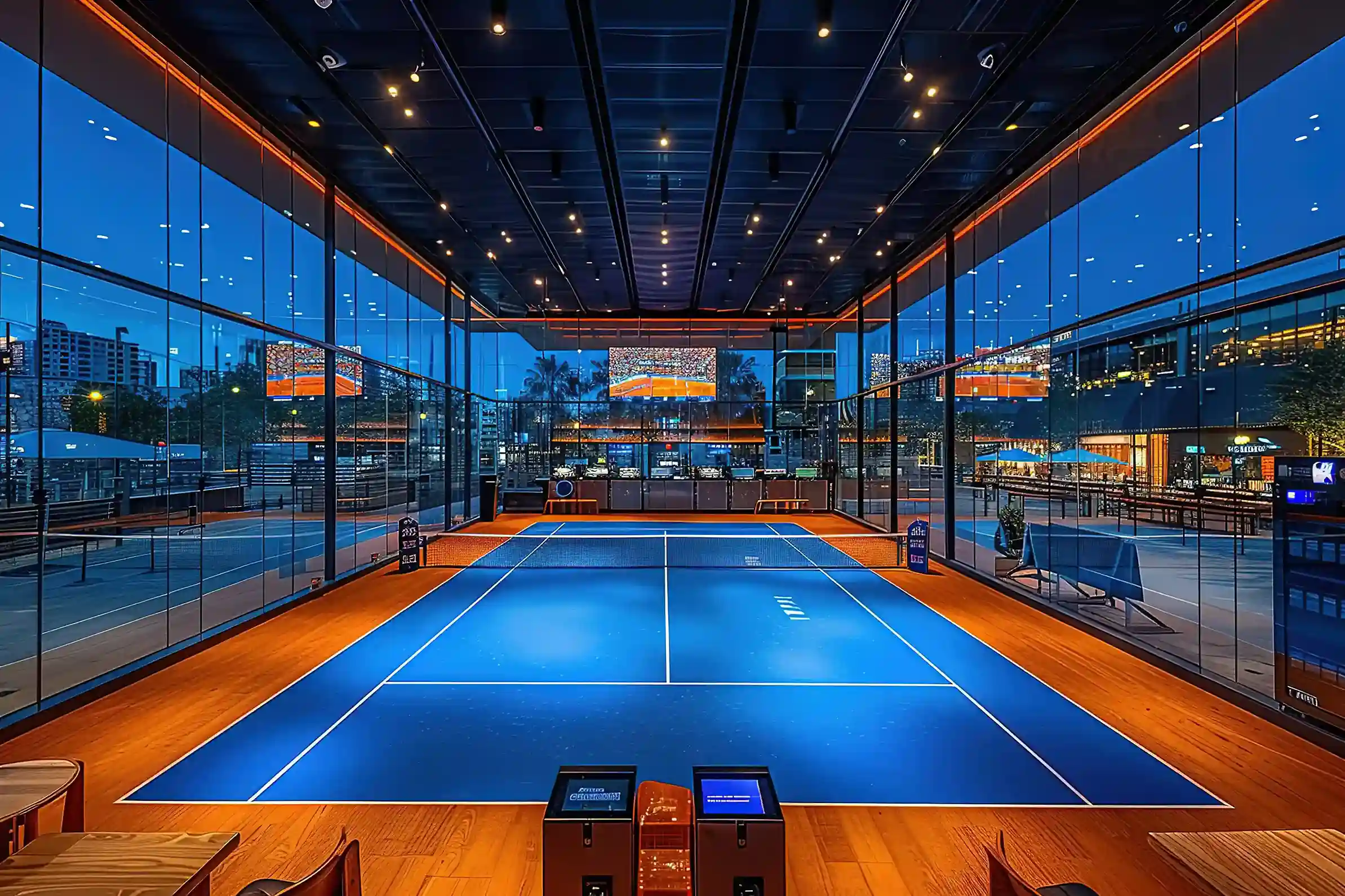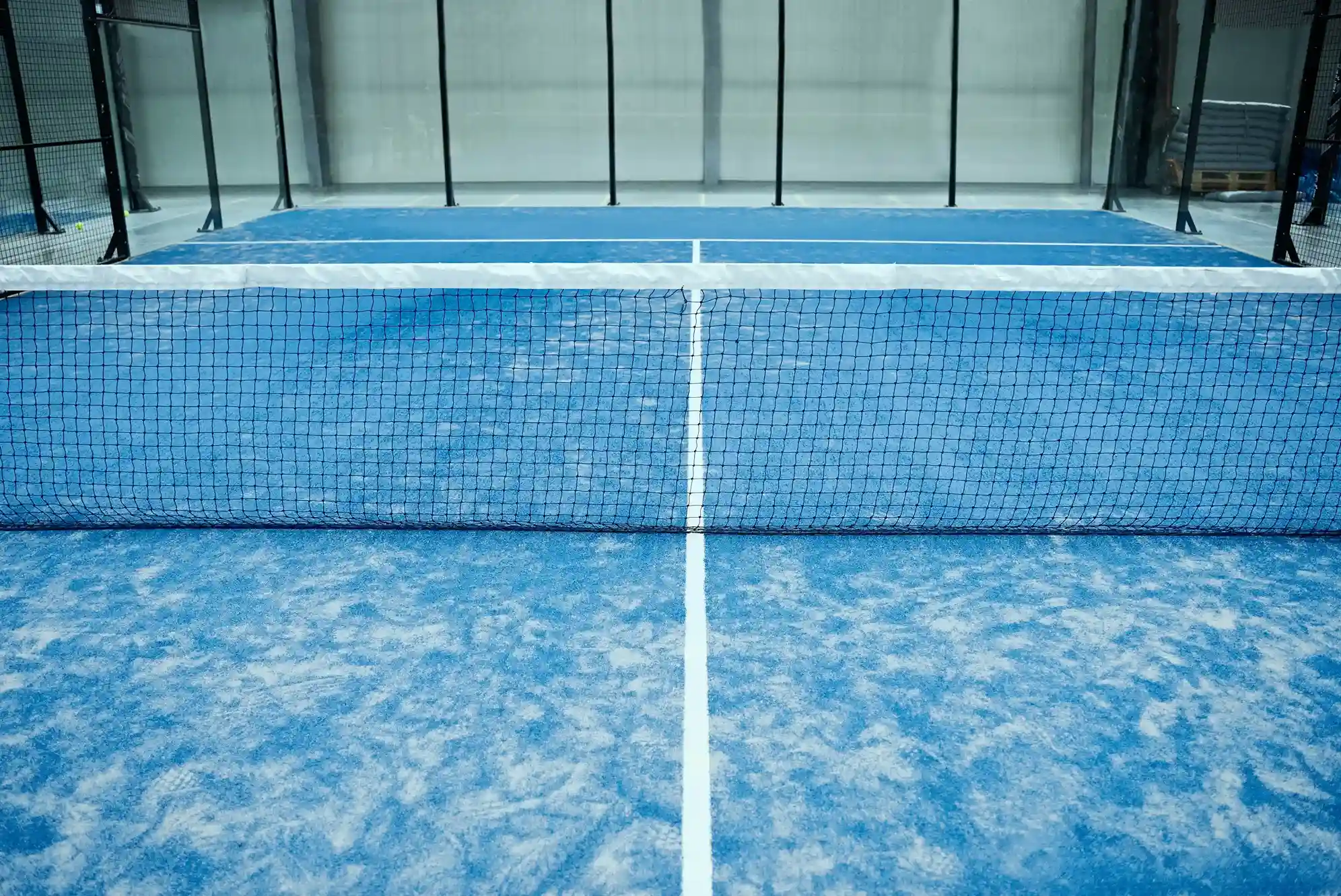Basketball Wood flooring is a top choice for basketball courts, combining durability, performance, and aesthetics in a way that enhances both play and the overall atmosphere of the game. Whether you’re building a professional arena, upgrading a school gym, or creating a home court, understanding the various types of wood flooring, their benefits, and how they compare to other options is essential.
In this ultimate guide, we’ll explore the advantages of wood flooring for basketball, the different types available, how to choose the best option for your needs, and other important considerations that ensure you make an informed decision for your court.
What Makes Wood Flooring Ideal for Basketball Courts?
Wood flooring is ideal for basketball courts due to its combination of durability, resilience, and performance-enhancing properties. The natural surface of wood provides excellent grip and traction, which is essential for fast-paced movements and preventing player injuries. It also offers shock absorption, reducing the impact on players’ joints and enhancing comfort during high-intensity games.
The ability of wood flooring to maintain consistent bounce makes it perfect for basketball, ensuring that the ball behaves predictably, which is crucial for competitive play. Furthermore, wood floors are long-lasting and can withstand heavy use over time when properly maintained, making them a solid investment for sports venues. Wood’s aesthetic appeal adds to the overall atmosphere, offering a professional look and feel to the court.


How Does Wood Flooring for Basketball Compare to Other Court Flooring Options?
Wood flooring for basketball courts offers several advantages when compared to other flooring options like synthetic, rubber, or tile surfaces. Unlike synthetic flooring, which may not provide the same level of bounce or traction, wood offers a more natural feel that is preferred by professional players.
It also provides better shock absorption, reducing the strain on players’ joints and minimizing the risk of injury during intense play. When compared to rubber flooring, wood is often more durable and can withstand heavy use for longer periods, though rubber can provide more cushioning for impact. Tile surfaces, while easy to clean and maintain, don’t offer the same level of traction and performance consistency that wood does, making them less ideal for basketball.
However, wood flooring requires more maintenance, such as refinishing and regular cleaning, to keep it in optimal condition.
What Are the Different Types of Wood Flooring Used for Basketball Courts?
There are several types of wood flooring commonly used for basketball courts, each offering unique characteristics that cater to different needs and budgets:
1. Maple Wood Flooring
Hard maple is the most popular choice for basketball courts due to its durability, density, and consistent performance. Its smooth surface provides excellent traction and ball bounce, making it the gold standard for professional courts. Maple wood also holds up well under heavy foot traffic and frequent use, which is why it’s the primary material for NBA arenas and gymnasiums.
2. Oak Wood Flooring
While less common than maple, oak wood is sometimes used for basketball courts. It’s a bit softer than maple, which can make it more prone to denting and damage, but it still offers good performance and an appealing aesthetic. Oak flooring can provide a more affordable option for gymnasiums or recreational courts compared to maple.
3. Ash Wood Flooring
Ash is another hardwood used for basketball courts, though it’s less common than maple and oak. It’s known for its flexibility and shock absorption properties, which can help reduce the impact on players’ joints. Ash is generally more affordable than maple but may not provide the same long-term durability.
4. Birch Wood Flooring
Birch wood is a strong, cost-effective option, though it’s not as widely used as maple. Birch provides a smooth surface and can offer good traction, though it’s typically more prone to wear and tear over time. It’s a good choice for smaller gyms or courts with moderate use.


5. Engineered Wood Flooring
Engineered wood consists of multiple layers of wood veneers that are glued together, offering improved stability and resistance to moisture. This type of wood flooring is often used in areas where humidity changes are a concern. Engineered wood can be more affordable than solid wood options and is less prone to expansion or contraction due to environmental changes.
Each type of wood flooring brings its own set of advantages and considerations, with maple being the preferred choice for professional basketball courts due to its exceptional durability and performance. However, other wood types like oak or ash can be suitable for different environments based on specific budget or performance needs.
How Does the Quality of Wood Flooring Affect Basketball Court Performance?
The quality of wood flooring plays a crucial role in the overall performance of a basketball court. High-quality wood, such as hard maple, ensures consistent ball bounce, optimal traction, and shock absorption, all of which are essential for player safety and game performance. Superior flooring also maintains its smooth surface over time, reducing wear and tear, which can affect both the gameplay and the appearance of the court.
Poor-quality wood or improperly maintained flooring may lead to issues like uneven surfaces, slippery spots, and deterioration of the court’s bounce, ultimately hindering the game and increasing the risk of injury. Therefore, investing in high-quality wood flooring ensures long-term durability, better player experience, and minimal maintenance costs.
What Is the Best Wood Flooring for Basketball Courts in Terms of Durability?
Hard maple is widely considered the best wood flooring for basketball courts in terms of durability. It is highly resistant to wear and tear, providing a long lifespan even with heavy use. Its dense grain structure also ensures consistent performance, maintaining ball bounce and traction over time.
Maple floors, when properly maintained, can last for decades, making them the top choice for professional courts.
What Are the Cost Differences Between Wood Flooring and Other Flooring Options for Basketball?
Wood flooring, particularly hard maple, tends to be more expensive upfront compared to alternatives like rubber, synthetic, or vinyl flooring. The cost of wood floors includes materials, installation, and regular maintenance, such as refinishing.
On the other hand, options like rubber or synthetic flooring are generally more cost-effective initially but may require more frequent replacements or repairs. In the long term, wood flooring may be more cost-efficient due to its durability and longevity.


How Do Wood Flooring Options for Basketball Courts Vary in Terms of Maintenance?
Wood flooring requires regular maintenance to preserve its performance and appearance. This includes periodic cleaning, refinishing, and recoating to maintain its smooth surface and protect it from wear. Maple wood, being the most durable, requires less frequent refinishing compared to other wood types like oak or ash, but all wood floors need to be kept dry and free from excessive moisture.
In contrast, synthetic and rubber floors may require less maintenance but can wear out more quickly and may need to be replaced sooner.
What is the Demand for Wood Flooring in Basketball Courts in Developed Countries?
The demand for wood flooring in basketball courts in developed countries remains high, driven by its proven durability, performance, and aesthetic appeal. Regions, especially in countries like the United States, Canada, Germany, and Japan, wood flooring is the preferred choice for both professional arenas and community sports facilities.
1. Professional and Competitive Sports Arenas
In professional basketball leagues, such as the NBA (National Basketball Association) in the United States, wood flooring is a critical element of the playing surface. The hard maple wood, known for its smoothness, durability, and consistent bounce, is universally used in NBA courts.
This is because it provides optimal conditions for competitive play and player safety. The investment in high-quality wood floors is considered essential for maintaining the professional standard expected in these arenas.
2. Educational Institutions and College Sports
In universities and schools, wood floors are the go-to choice for basketball courts. Educational institutions prefer wood because it provides an authentic basketball experience, offering superior ball bounce, player comfort, and traction. Wood floors are also seen as a long-term investment, with schools recognizing that well-maintained wood surfaces can last decades, even under heavy use.
With the popularity of sports programs in colleges and the rising participation in sports at the youth level, the demand for premium wood flooring has seen sustained growth in this segment.
3. Community Centers and Recreational Facilities
Community centers, gyms, and recreational facilities in developed countries also maintain high demand for wood flooring. These venues often serve as multi-purpose spaces that cater to local sporting events, recreational leagues, and fitness programs. Wood floors provide the ideal combination of aesthetics and functionality for such venues, where longevity and performance are key considerations.
Despite the higher upfront cost of wood flooring compared to alternatives like synthetic or rubber floors, many facility owners recognize that the long lifespan of wood flooring makes it a more cost-effective solution in the long run. Moreover, wood floors contribute to a premium feel that enhances the overall experience of users and spectators alike.


4. Technological Advancements and Innovations
In recent years, there has been growing interest in innovations in wood flooring technology, such as engineered wood and moisture-resistant coatings, that enhance the quality and durability of basketball courts. The introduction of advanced finishing techniques and environmentally friendly materials has increased the attractiveness of wood flooring in regions with high environmental awareness.
As a result, the demand for wood flooring is expanding even further in developed countries where sustainable and high-performance flooring solutions are increasingly prioritized.
5. Cultural and Aesthetic Considerations
Beyond functionality, the aesthetic value of wood flooring also plays a significant role in its demand. Wood floors are associated with tradition, elegance, and high-end performance, making them the material of choice for prestigious sports venues.
The visual appeal of natural wood grain and the uniform appearance of a wood court align with the cultural values of many countries that emphasize quality and craftsmanship in their sports infrastructure.
Conclusion
In conclusion, wood flooring remains the gold standard for basketball courts in developed countries due to its unmatched durability, performance, and aesthetic appeal. Whether for professional sports arenas, educational institutions, or community recreational facilities, wood flooring provides an optimal playing surface that ensures consistent ball bounce, player safety, and long-lasting quality.
Despite the higher initial investment, the long-term benefits and ability to withstand heavy use make it the preferred choice in these regions. As the demand for high-quality sports infrastructure continues to rise, wood flooring’s role in basketball courts will only grow.
If you’re looking to upgrade your basketball court or invest in top-quality wood flooring, contact VMKON today to get a quote and explore our premium solutions tailored to your needs.







